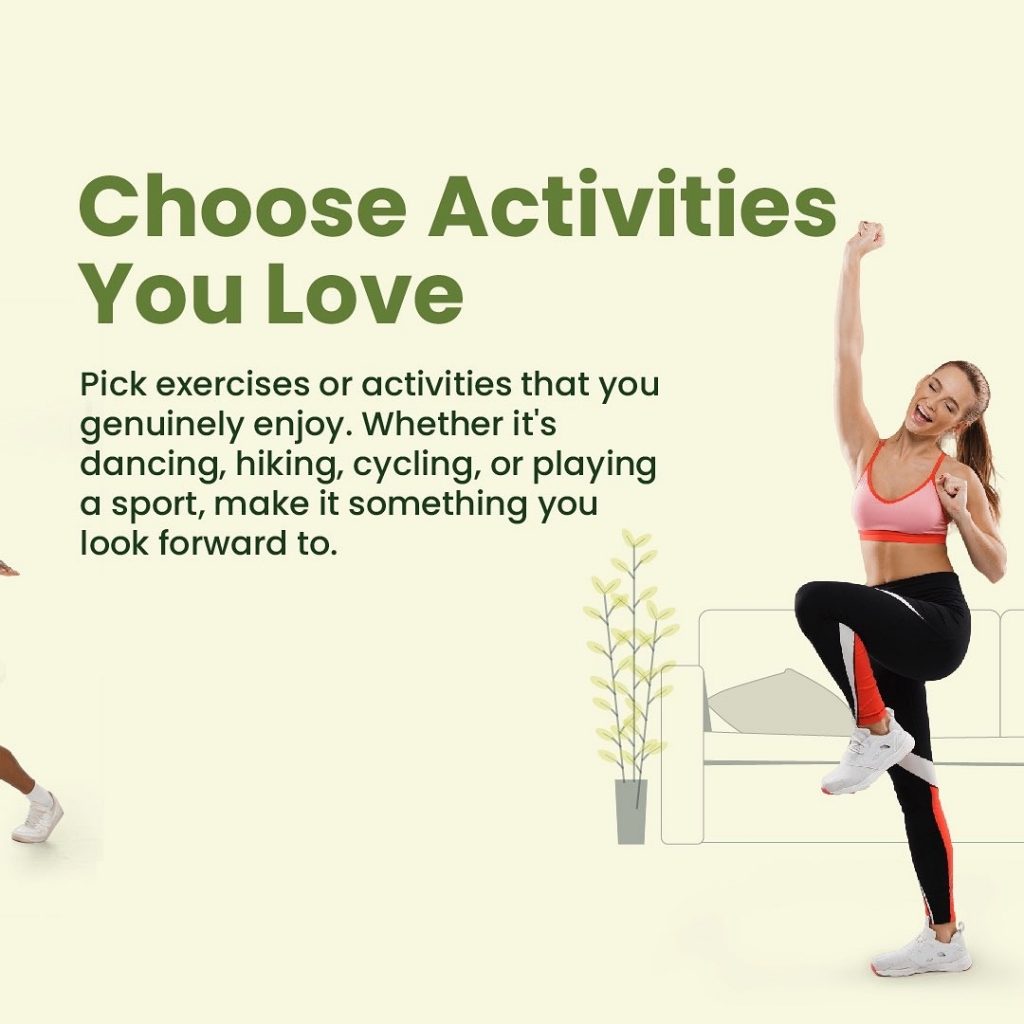Achieving a healthy, active lifestyle doesn’t have to mean a rigid routine or hours spent in the gym. The secret to long-term fitness success is creating a workout plan that aligns with your unique lifestyle, goals, and preferences.
In this blog, we’ll explore practical steps to design a sustainable fitness regimen tailored to your needs. From identifying your fitness goals to incorporating activities you love, we’ll guide you through the process of making fitness a natural and enjoyable part of your daily life. Whether you’re a beginner or looking to revamp your routine, these tips will help you craft a plan that works and keeps you motivated.
1. Assess Your Current Fitness Level and Lifestyle
Before starting a new exercise routine, it’s essential to evaluate where you currently stand in terms of fitness and daily habits. Understanding your baseline will help you set realistic goals and identify potential obstacles.
Take note of your activity levels, health conditions, and how much time you can realistically dedicate to exercise. For instance, if you have a sedentary job, incorporating movement breaks into your workday could be a great starting point. Similarly, if evenings are your most flexible time, design your fitness plan around that schedule.
By assessing your lifestyle, you can avoid setting yourself up for failure and instead build a realistic foundation for your fitness journey.
2. Define Clear and Achievable Fitness Goals
Setting specific, measurable, attainable, relevant, and time-bound (SMART) goals is the cornerstone of any effective fitness plan. Defining what you want to achieve will help you stay focused and track your progress.

Ask yourself questions like:
- Are you aiming to lose weight, build muscle, or improve your endurance?
- Do you want to manage stress, improve flexibility, or boost your energy levels?
For example, instead of saying, “I want to get fit,” try setting a goal like, “I want to jog for 30 minutes without stopping within three months.” Having clear objectives will give you direction and keep you motivated as you work toward your fitness milestones.
3. Choose Activities That You Enjoy

The best fitness plan is one that doesn’t feel like a chore. To stay consistent, choose activities you genuinely enjoy. Whether it’s dancing, hiking, swimming, or playing a sport, finding joy in movement will make it easier to stick to your routine.
Explore different options until you discover what works for you. If you’re unsure where to start, consider signing up for a trial class or experimenting with free workout videos online. The variety not only keeps things interesting but also ensures that your workout plan feels tailored to your preferences.
Mixing different types of exercise, such as cardio, strength training, and flexibility workouts, can also keep your routine engaging while ensuring a balanced approach to fitness.
4. Create a Flexible Schedule
Life can be unpredictable, and sticking to a rigid workout routine isn’t always feasible. Instead, build flexibility into your fitness plan so you can adapt to changing circumstances without feeling discouraged.
Decide how many days a week you’ll work out and for how long. For example, if your goal is to exercise five times a week, include shorter sessions for busy days and longer workouts when you have more time.
Additionally, consider adopting a mix of structured and unstructured activities. Structured workouts, like yoga classes or gym sessions, can provide accountability, while unstructured movement, such as walking your dog or gardening, keeps you active in a relaxed manner.
5. Start Small and Gradually Build Up
One common mistake is trying to do too much too soon. Overloading your fitness plan can lead to burnout or injury, derailing your progress. Instead, start with manageable steps and gradually increase the intensity, duration, and frequency of your workouts.
For instance, if you’re new to fitness, begin with 10–15 minutes of light exercise, such as brisk walking or bodyweight exercises. Over time, you can add more challenging activities or increase the duration as your fitness improves.
Consistency is more important than intensity when starting out. Building a habit of regular exercise, even in small increments, lays the foundation for long-term success.
6. Incorporate Rest and Recovery Days
Rest days are just as important as workout days in any fitness plan. Giving your body time to recover helps prevent overtraining, reduces the risk of injury, and allows your muscles to rebuild and grow stronger.
Plan for at least one or two rest days per week, depending on your activity levels. Active recovery, such as stretching, yoga, or light walking, can also be beneficial on days when you’re not doing intense workouts.

Listening to your body is key. If you feel unusually fatigued or sore, take an extra day off to recover fully. A balanced approach that includes rest will keep you energized and motivated in the long run.
7. Track Your Progress and Adjust as Needed
Tracking your progress is essential for staying motivated and identifying areas for improvement. Use tools like fitness apps, journals, or wearable trackers to monitor your workouts, steps, and overall activity levels.
Celebrate small milestones, such as completing a week of consistent workouts or achieving a new personal best. These victories, no matter how small, will boost your confidence and encourage you to keep going.
Additionally, be open to adjusting your fitness plan if it’s not working as intended. If a particular workout isn’t enjoyable or your schedule changes, tweak your plan to better align with your needs and goals.
8. Pair Fitness with Healthy Lifestyle Choices
While exercise is a crucial part of staying healthy, it’s only one piece of the puzzle. Pairing your fitness plan with other healthy habits, such as balanced nutrition, sufficient hydration, and adequate sleep, can amplify your results.
Focus on eating nutrient-rich foods that fuel your body and support recovery. Staying hydrated helps maintain energy levels and improves performance during workouts. Prioritizing sleep ensures that your body has the time it needs to repair and rejuvenate.
By taking a holistic approach, you’ll create a well-rounded lifestyle that supports your fitness goals and overall well-being.
9. Stay Motivated with Support and Rewards
Staying motivated can be challenging, especially during busy or stressful times. Building a support system and rewarding yourself for progress can help keep your enthusiasm alive.

Work out with a friend or join a fitness community to stay accountable and share your journey. Encouragement from others can make a significant difference in maintaining motivation.
Set up a reward system for hitting milestones. For example, treat yourself to new workout gear or a relaxing spa day after completing a month of consistent exercise. These incentives create positive associations with your fitness routine and keep you on track.
Conclusion: Take the First Step Toward a Healthier You
Creating a fitness plan that fits your lifestyle doesn’t have to be complicated. By assessing your current habits, setting clear goals, choosing enjoyable activities, and building flexibility into your routine, you can design a plan that feels natural and sustainable. Remember to start small, incorporate rest, and pair your workouts with other healthy lifestyle choices for maximum impact.
Consistency and adaptability are key to long-term success. Whether you’re a beginner or an experienced fitness enthusiast, the right plan can help you achieve your health goals and improve your overall quality of life.
Ready to take charge of your fitness journey? Explore more tips and resources on our website, and don’t forget to share your progress in the comments below. We’d love to hear about your experiences and what works for you. Together, we can build a healthier, more active community!

Leave a Reply